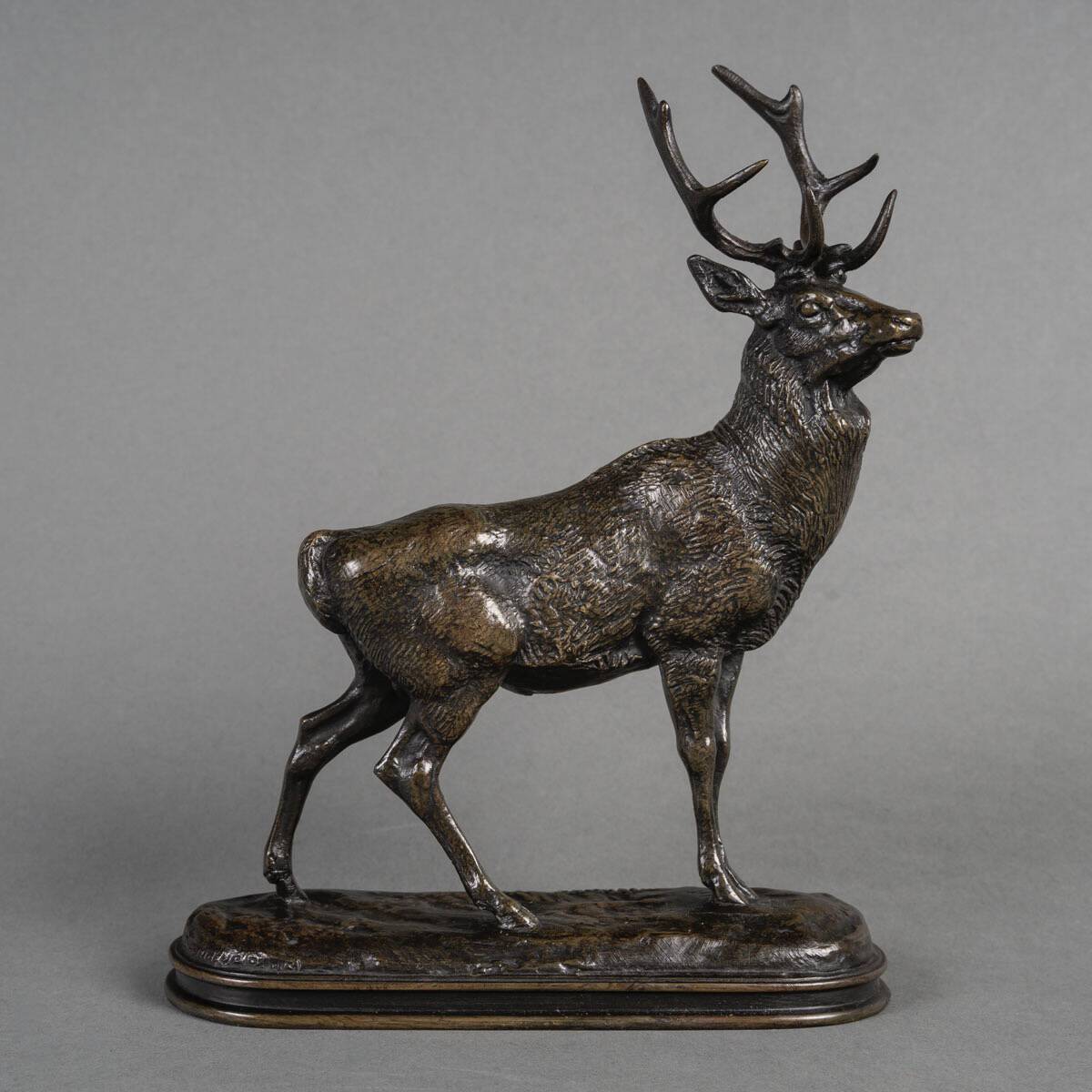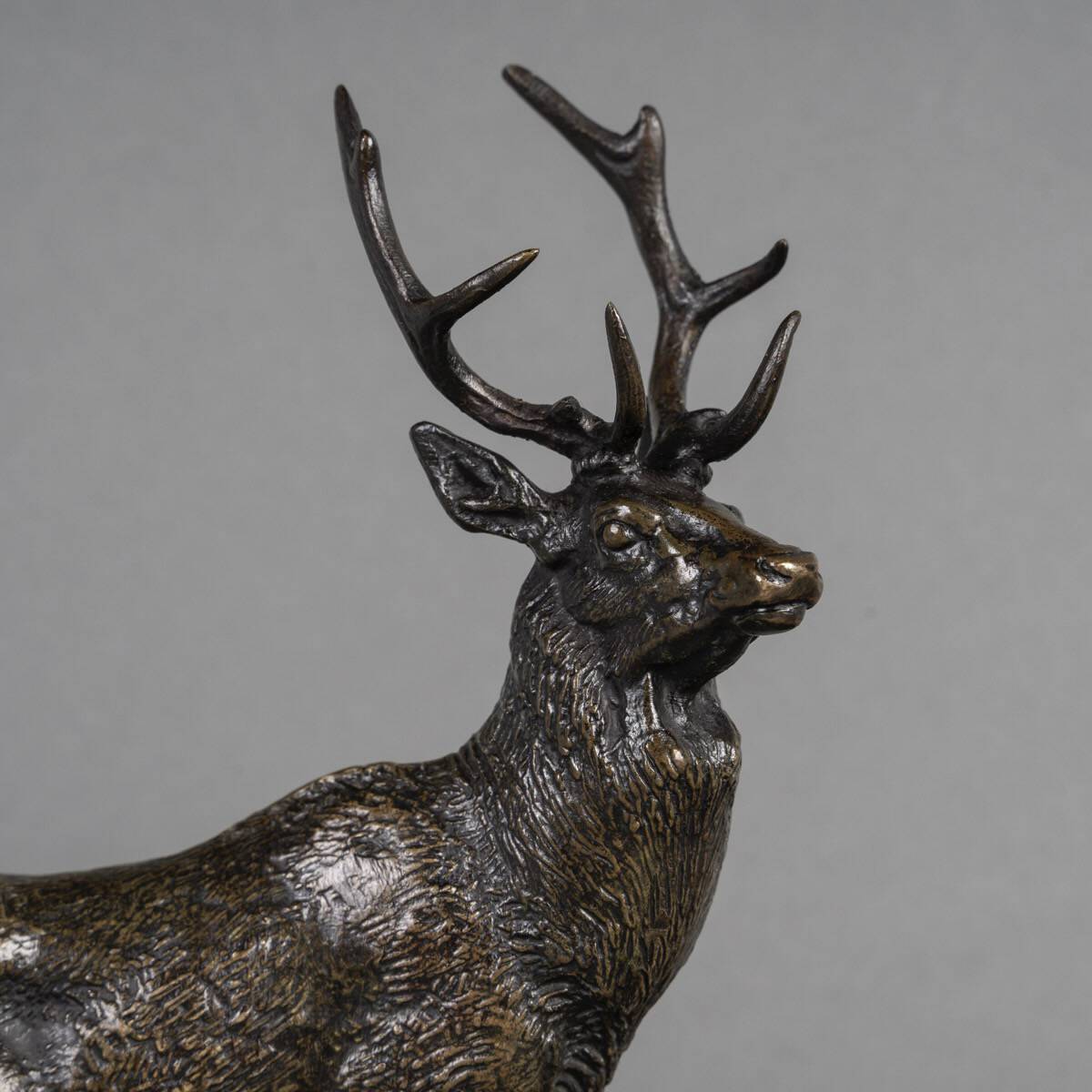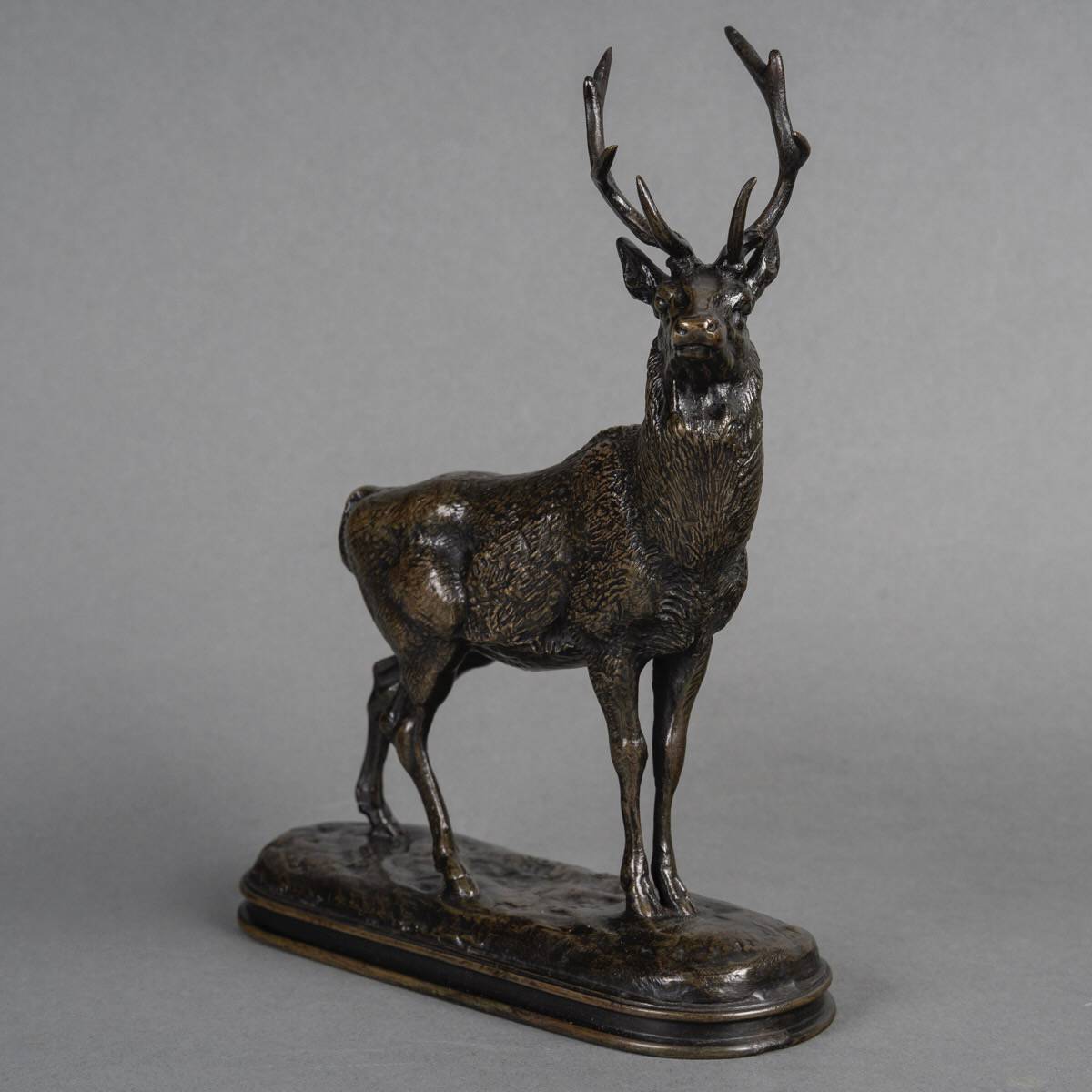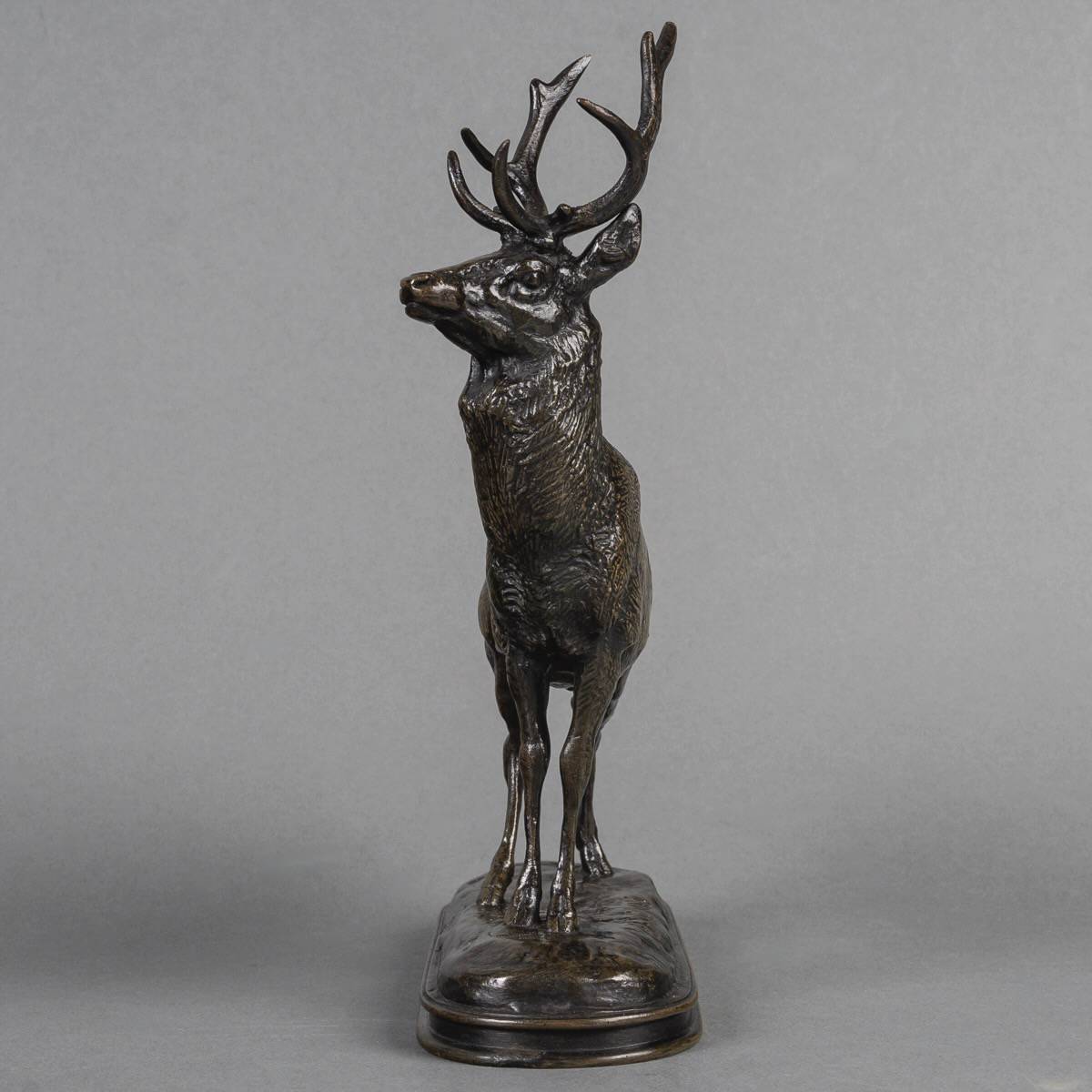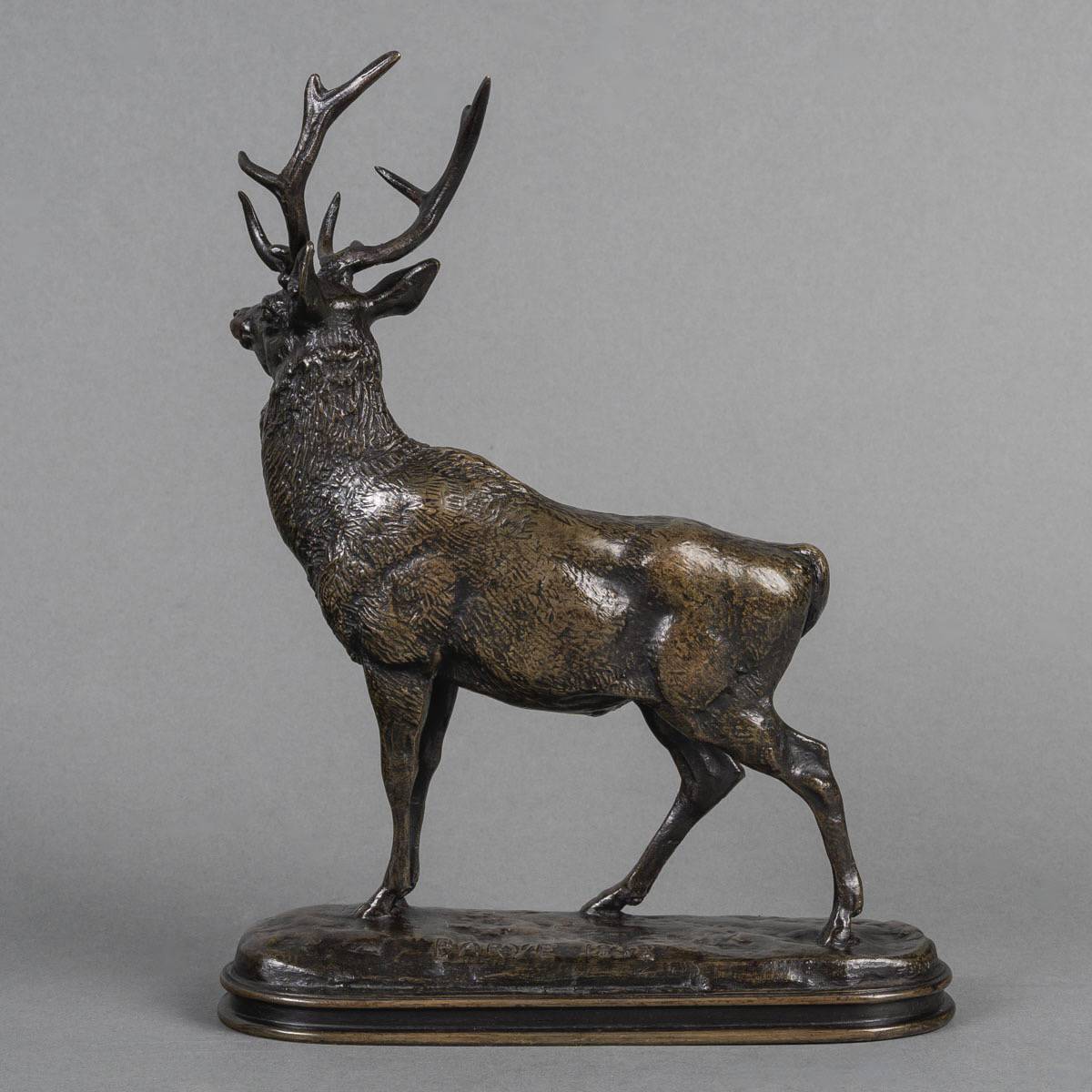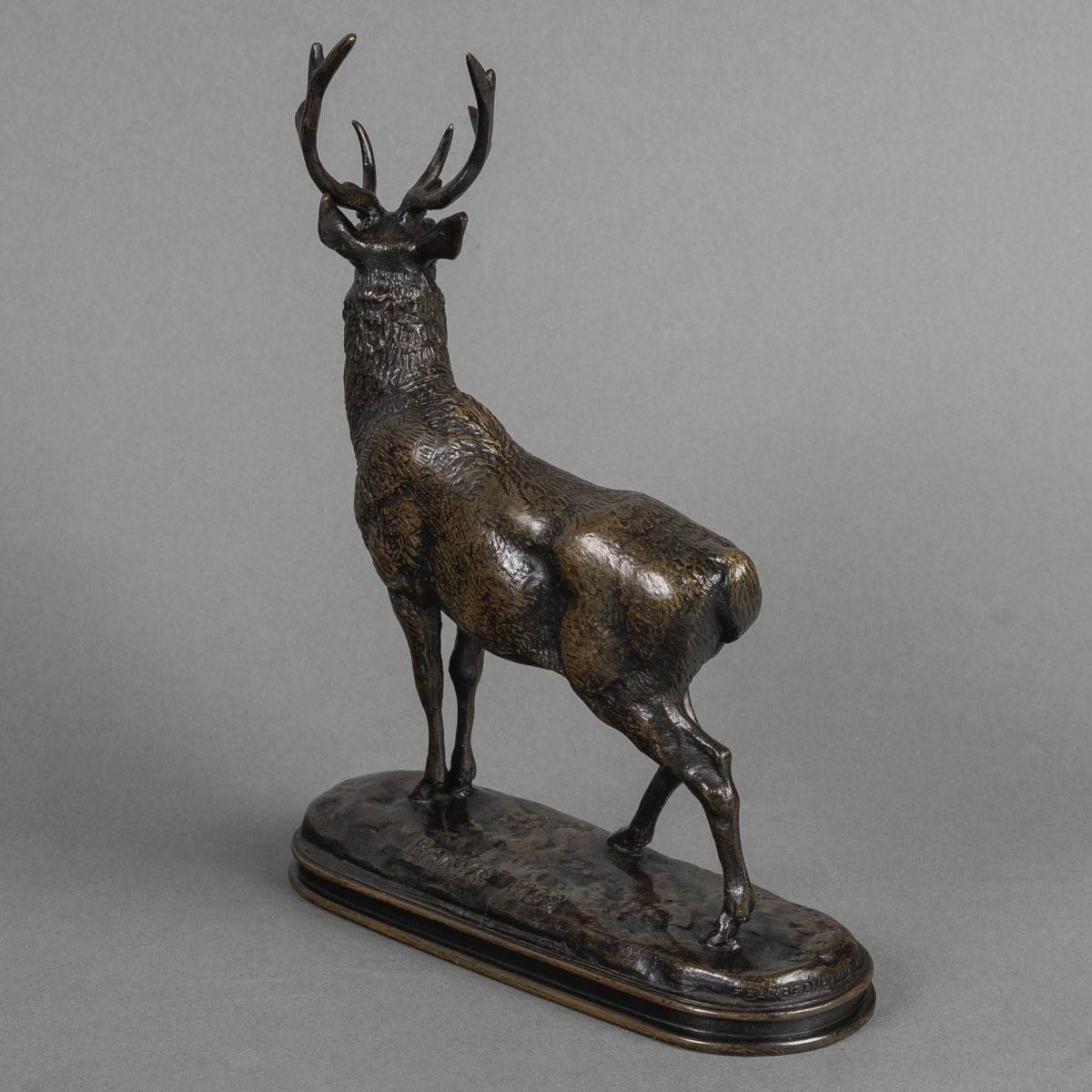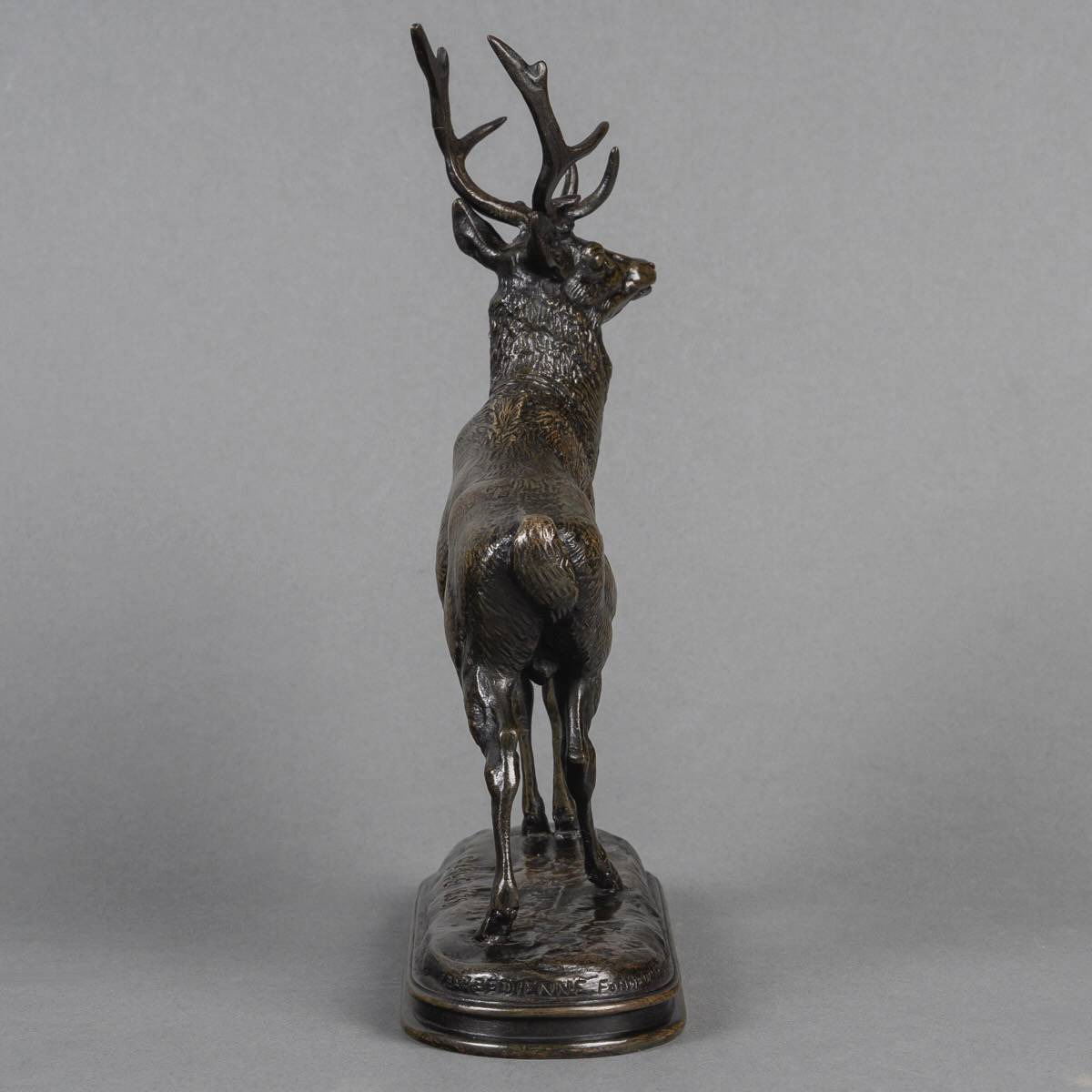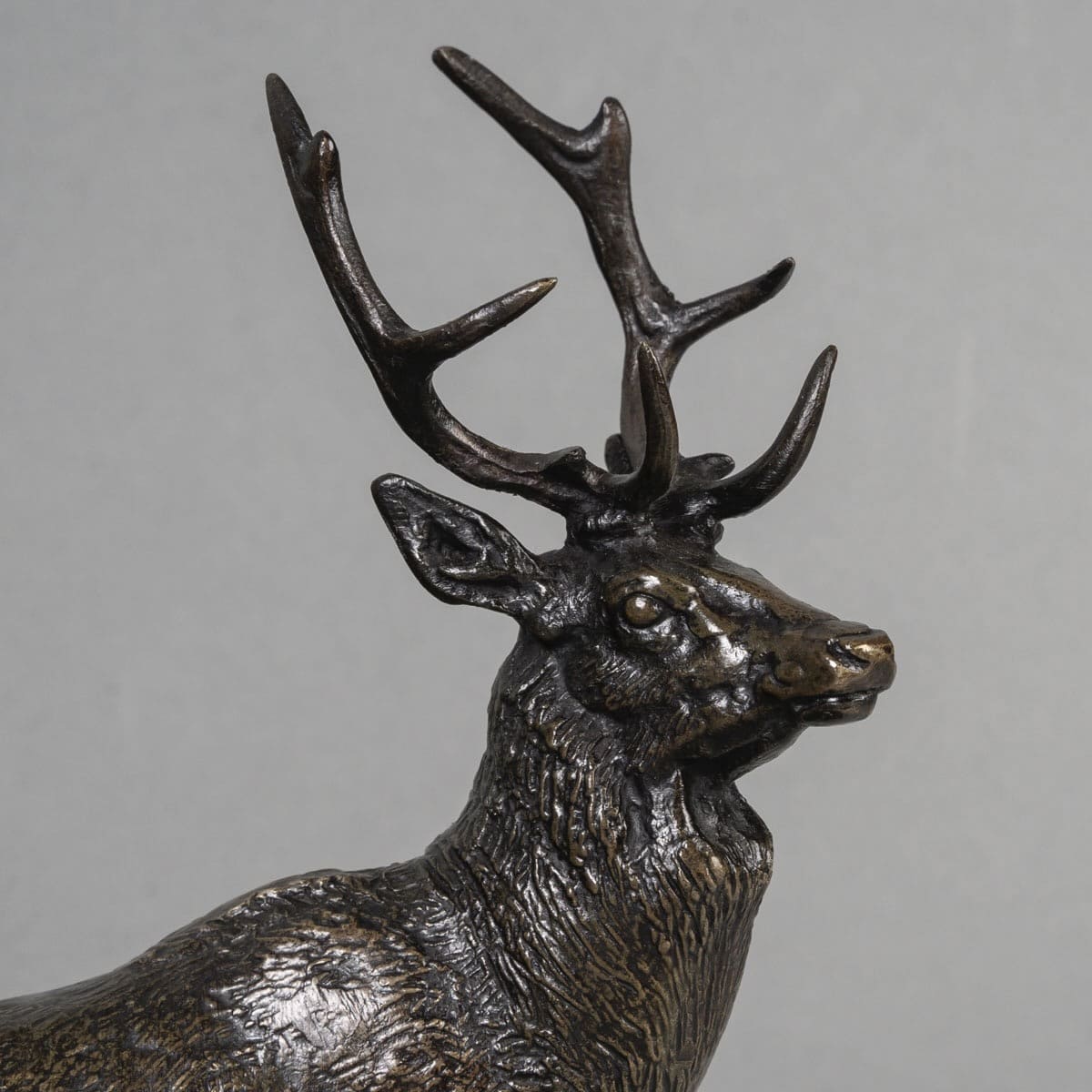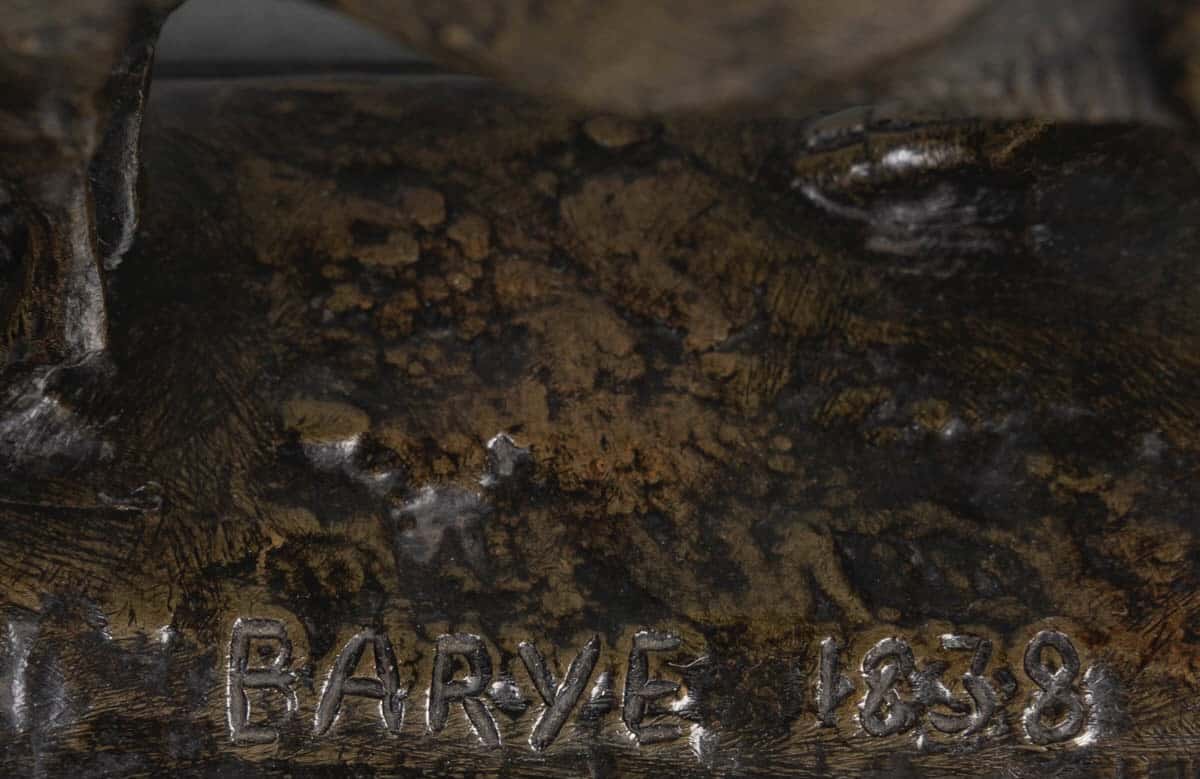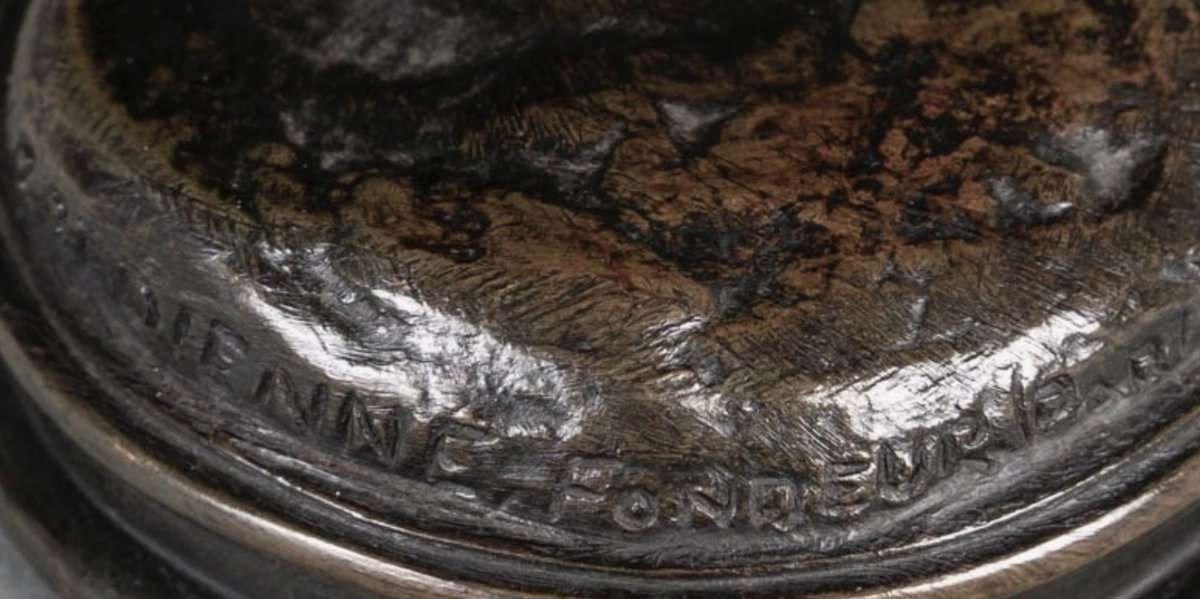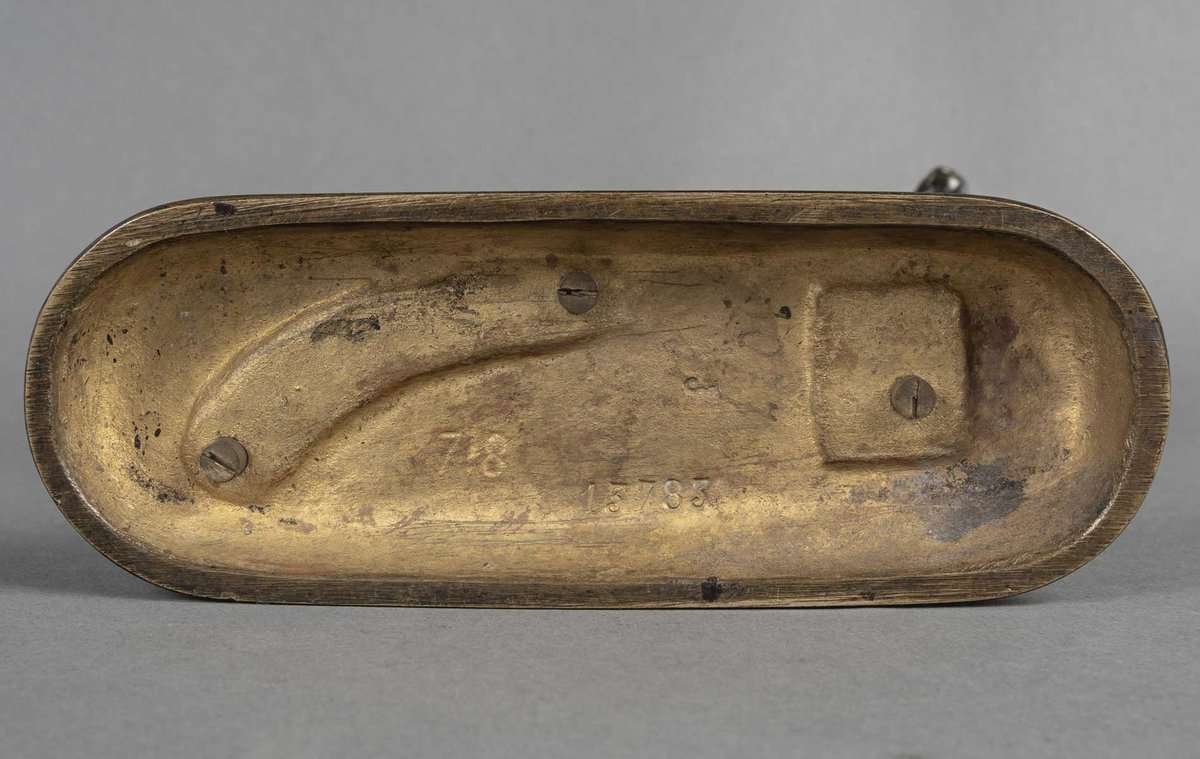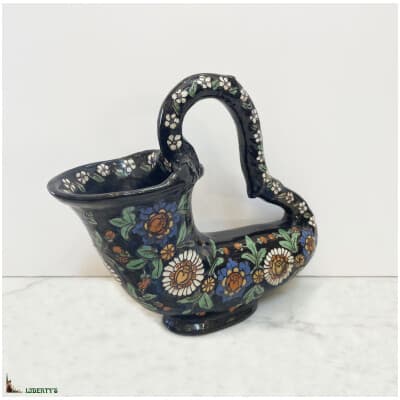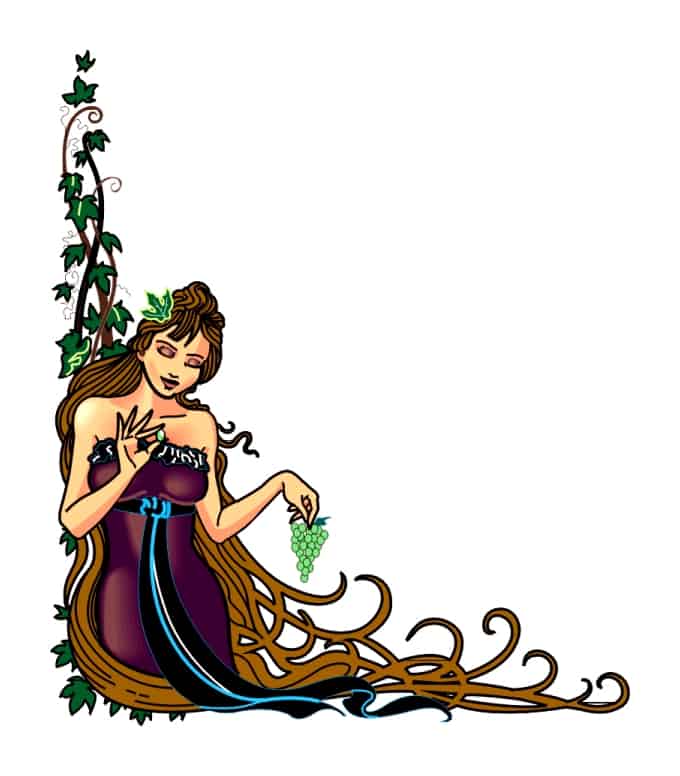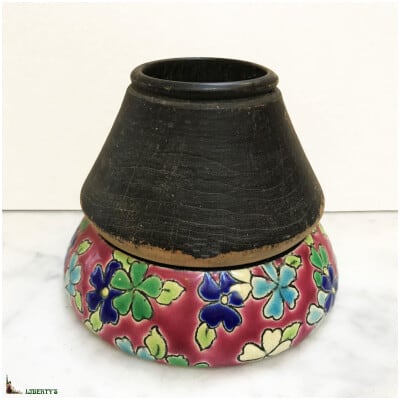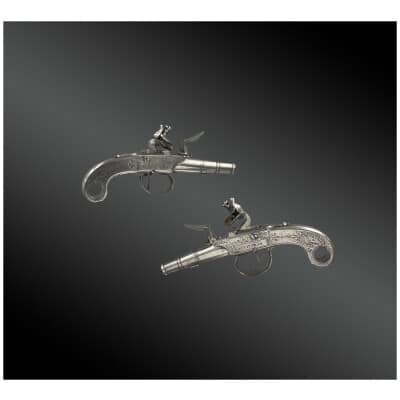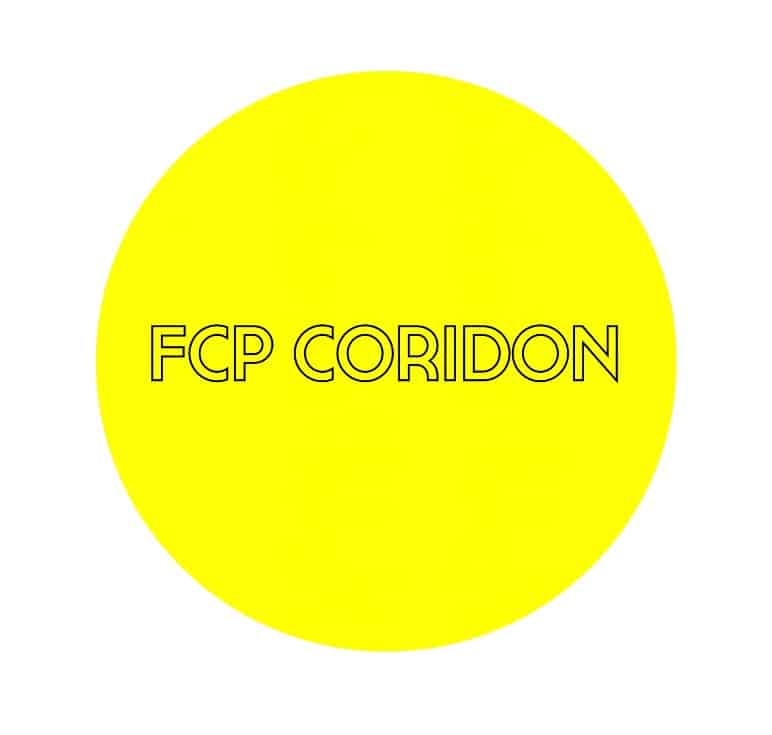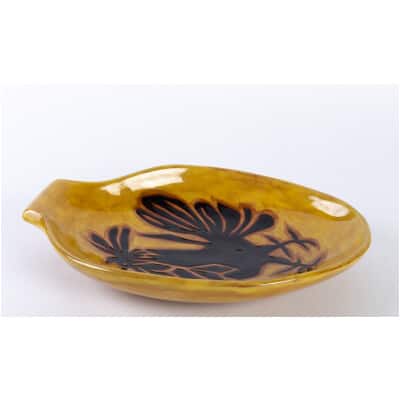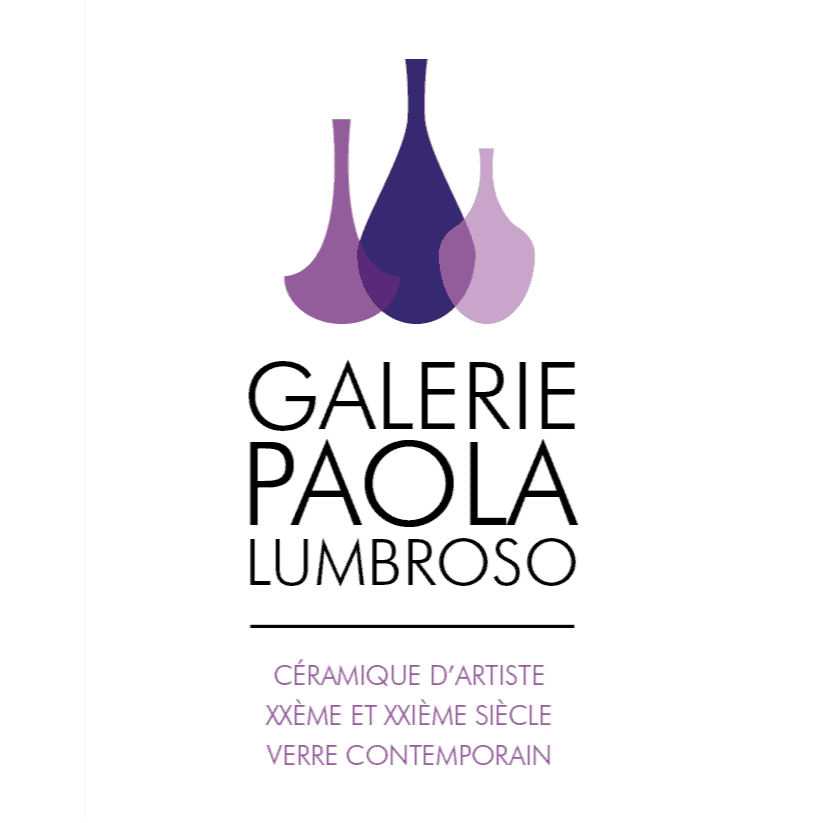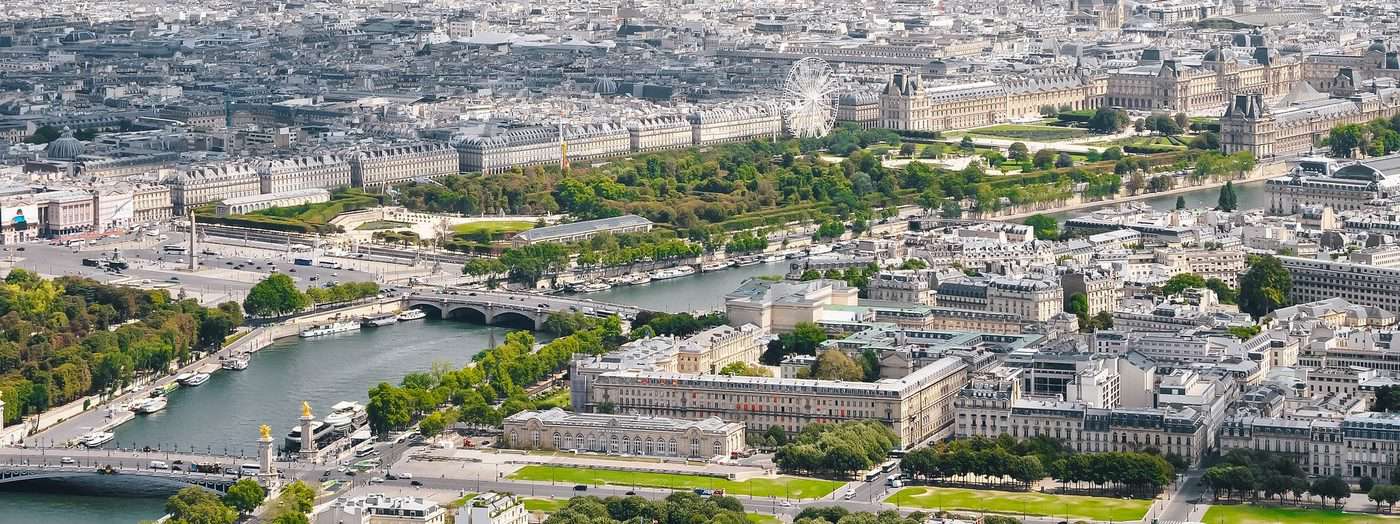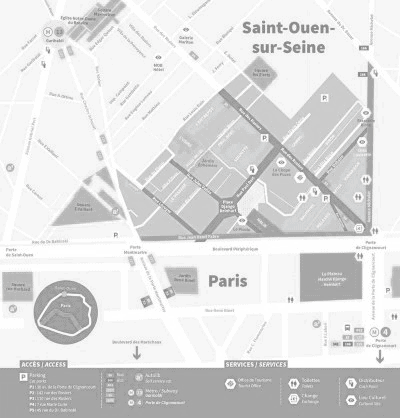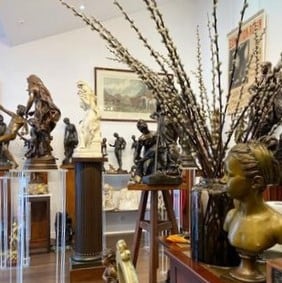
cATaLogUE Des PucEs
Sculpture – Listening deer 1838, Antoine-Louis Barye (1795-1875) – Bronze
Availability:
IN STOCK€2.200,00
Bronze print, with brown patina, representing a deer “Listening deer” , Antoine-Louis Barye (1795-1875).
Through this sculpture, the sculptor highlights the majestic and imposing appearance of the deer.
So much realism is not due to chance.
Indeed, Antoine-Louis Barye knows animal anatomy perfectly.
The sculptor revolutionized the way of representing animals.
For him, they are no longer political symbols or even mythological attributes, they become on the contrary, the unique subject, the animal as such and nothing else.
This vision of the subject allowed Antoine – Louis Barye to create unique works, imbued with elegance and naturalism.
Signature of the sculptor “BARYE” , followed by the date "1838" (date of creation of “The Listening Deer”), hollow, on the naturalist terrace.
Foundry Mark “F.BARBEDIENNE.FONDEUR.PARIS” .
Old edition sculpture, second part of the period XIXth century.
Perfect state of conservation and patina.
Length : 21 cm x 16 cm
Le “Listening deer” is the counterpart of “Deer with raised leg”.
Both models were created in 1838 .
Following the death of the sculptor Antoine – Louis Barye, the founder “Ferdinand Barbedienne” acquired several models, in particular, the “Listening deer”, in 1876.
“Listening Deer”, Antoine-Louis Barye (1795-1875)
Bronze print, with brown patina, representing a deer “Listening Deer” , Antoine-Louis Barye (1795-1875).
Through this sculpture, the sculptor highlights the majestic and imposing appearance of the Deer.
So much realism is not due to luck.
Indeed, Antoine Louis Barye knew animal anatomy inside out.
The sculptor revolutionized the way animals were represented.
For him, they were no longer political symbols or mythological attributes.
Instead, they become the sole subject, the animal as such and nothing else.
This vision of the subject enabled Antoine-Louis Barye to create unique works, imbued with elegance and naturalism.
Signature of the sculptor “BARYE” , followed by the date "1838" (date of creation of the “Listening Deer”), hollow, on the naturalist terrace.
Founder's mark “F.BARBEDIENNE.FONDEUR.PARIS”.
Old edition sculpture, period second part of 19th century.
Perfect state of conservation and patina.
Sizes : 21 cm x 16 cm
The “Listening Deer” is the counterpart to the “Deer with its leg raised”.
Both models were created in 1838 .
Following the death of sculptor Antoine-Louis Barye, “Ferdinand Barbedienne” acquired several models, including the “Listening Deer” in 1876 .

Antoine – Louis Barye (1795-1875)
Famous for his animal sculptures, Antoine – Louis Barye is the son of a goldsmith, who trained in metalworking, with a military equipment manufacturer and with Jacques-Henri Fauconnier.
In 1818, he entered the Ecole des Beaux-Arts in Paris and apprenticed in the workshop of the sculptor François Joseph Bosio and the painter Jean-Antoine Gros.
After several failures at the Grand Prix de Rome, Antoine-Louis Barye slammed the door of the Beaux-Arts in 1825.
He then turned towards animal sculpture which he would bring up to date.
With his friend Delacroix, he regularly went to the menagerie of the Natural History Museum to study and observe the animals.
It was in 1831 that Barye became known to the general public by exhibiting at the Salon “The Tiger Devouring a Gharial” (Louvre), a work depicting a violent combat “of impressive virtuosity”.
Two years later, he triumphed with “The Lion with the Serpent” plaster, which was also successfully exhibited in its bronze version during the Salon of 1836.
Preferring bronze to marble considered too cold, the artist multiplies the statuettes and small animal groups that he casts and chisels himself.
Barye died at the age of 80, leaving behind a large production of drawings, watercolors and paintings as well as sculptures and pieces of goldwork.
His works can be seen at the Louvre and Orsay Museums.
Antoine – Louis Barye (1795-1875)
Famous for his animal sculptures, Antoine-Louis Barye is a silversmith's son, who is trained in metalwork with a military equipment manufacturer and Jacques – Henri Fauconnier.
In 1818, he entered the Paris School of Fine Arts and apprenticed in the studio of sculptor François Joseph Bosio and painter Jean-Antoine Gros.
After several failures at the Grand Prix of Rome, Antoine-Louis Barye slammed the door of the Fine Arts in 1825.
He then turned to animal sculpture which he would bring back up to date.
With his friend Delacroix, he regularly goes to the menagerie of the Natural History Museum to study and observe animals.
It was in 1831 that Barye made himself known to the general public by exhibiting “The Tiger Devouring a Gavial” (Louvre) at the Salon, a work staging a violent fight “of impressive virtuosity”.
Two years later, he triumphed with “The Lion and the Snake” plaster, which was also successfully exhibited in its bronze version at the Salon of 1836.
Preferring bronze to marble considered too cold, the artist multiplied statuettes and small groups of animals, that he melts and chisels himself.
Barye died at the age of 80, leaving behind an important production of drawings, watercolors and paintings as well as sculptures, pieces of goldsmith's work.
His works can be seen at the Louvre and Orsay Museums.
Availability:
IN STOCK| Locations | |
|---|---|
| Century | |
| Style | |
| Object Type |
Questions and general requests
There are no inquiries yet.
Share this sheet:
Similar products
-
-
-
Objects of Collections
Pair of Flint guns in iron, with chest. Cork, XVIIIth Signed H PETITJEAN
€3.200,00 -
